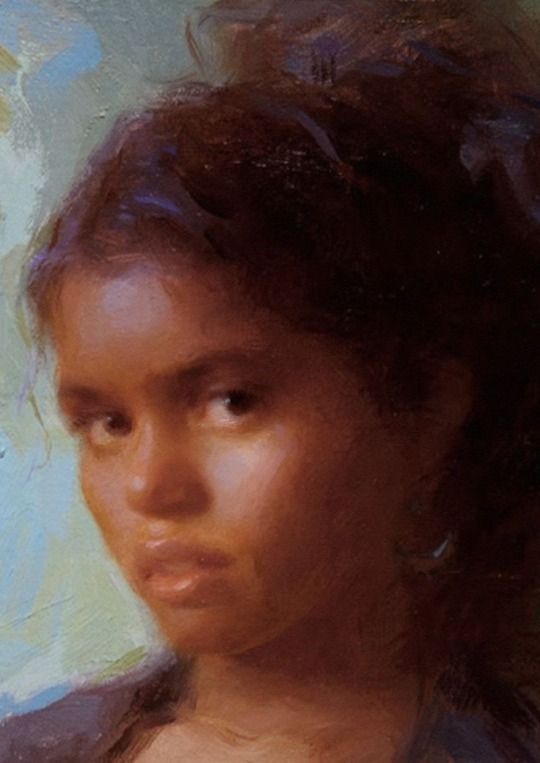#Susan Lyons
Photo

Agent Smith does the tango 🌹
10 notes
·
View notes
Text
In 'A Christmas Carol,' Jefferson Mays is The Masterpiece
Jefferson Mays, the man of a hundred voices, gestures, postures and beings is an amazing host of 'A Christmas Carol.'
Jefferson Mays in A Christmas Carol (courtesy of A Christmas Carol Live)
Someone once said, “It is easier for a camel to go through an eye of a needle than for a rich man to enter the Kingdom of Heaven.” Increased with golden toilets, their own airplanes and wanting for nothing, the rich don’t need to believe in God nor be accountable to anyone. Indeed in Charles Dickens’ A Christmas Carol…
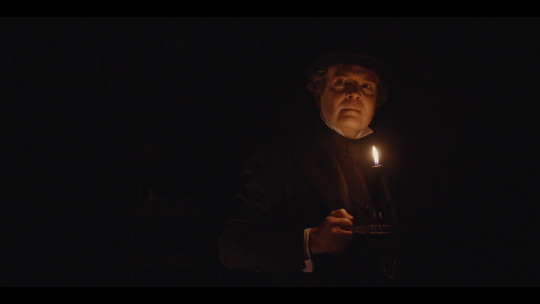
View On WordPress
#A Christmas Carol#ben Stanton#Cookie Jordan#Dane Laffrey#Jefferson Mays#Joshua D. Reid#Lucy MacKinnon#Michael Arden#Susan Lyons
0 notes
Photo
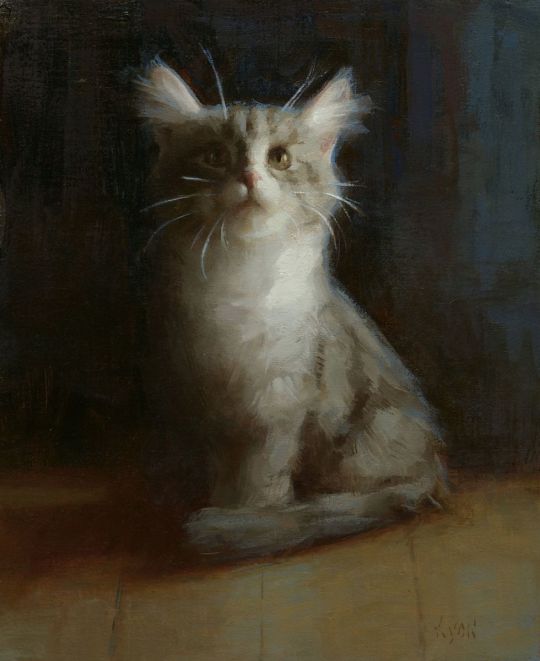
Susan Lyon
More Please
Oil on canvas
451 notes
·
View notes
Text


QI series R episode 2: ruff and ready
7 notes
·
View notes
Text

well damn can’t have that in my adaptation of the “middle aged man forcing himself on a child” novel
#stanley kubricks grave is a gender neutral bathroom#lolita1962#stanley kubrick#susan bordo#sue lyon
3 notes
·
View notes
Text
"Every man has a last choice after the first, a chance of forgiveness. It is not too late. Turn. Come to the Light."
Merriman Lyon, Susan Cooper, "The Dark Is Rising"
0 notes
Text
“Hawkin is a child of the thirteenth century, Will,” [Merriman] said. “Seven hundred years before you were born. He belongs there. By my art, he has been brought forward out of it for this one day [to 1875], and then he will go back again. As few ordinary men have ever done. ... I existed—exist--in Hawkin's century. There, Hawkin is my liege man. I am his lord, and more than his lord, for he has been with me all his life, reared as if he were a son, since I took him when his parents had died.”
“No son ever had better care,” Hawkin said, rather huskily; he looked at his feet, and tugged the jacket straight, and Will realized that for all the lines on his face Hawkin was not much older than his own brother Stephen.
-- Chapter 7: The Book of Gramarye
Hawkin being the tool by which Merriman is able to extract knowledge for Will breaks my heart. It's a fundamental change to the relationship between a child and his adoptive parent, to have his life be the bond for retrieving an object, even an important object. And as both son and subject of Merriman, extracted from an explicitly feudal era for this purpose, there is no real option for Hawkin to say “No, I will not give over my life to you in this way.” Of course Hawkin is shaken and shattered, even though he doesn't die. How could Hawkin not come to the conclusion that the Light cares nothing for him? It doesn't. Merriman as a person does. But in his capacity as the oldest of the Light's avatars, he cares about the Light's goals more.
It matters that Will compares Hawkin to Stephen. Stephen is special to Will: Will occupies his old room, and Stephen's the object of a bit of hero worship on Stephen's part. Stephen is grown, but he's still a sibling, and he's dear to Will. And Hawkin is dear to Merriman. Will, in witnessing Hawkin be commanded to risk his life for Will's education, must be realizing that he may be called on to sacrifice people he cares about deeply. That's a lot for an 11-year-old.
#susan cooper#the dark is rising#the dark is reading#readathon#hawkin#merriman lyon#will stanton#pitiless principles
1 note
·
View note
Text
Ida B. Wells in Brooklyn
Just 30 years after the Civil War, the Gilded Age, with its emphasis on industrialization and progress, held a special promise for Black Americans. Ida B. Wells sought to realize that promise.
— By Cori Brosnahan | Published: February 2018 | November 04, 2023

On October 5, 1892, journalist and activist Ida B. Wells addressed a packed house at New York’s Lyric Hall. The subject was lynching. Wells had recently published an editorial that exposed the lies used to justify the loathsome practice. The white press had long maintained that lynchings were a response to the rape of white women at the hands of black men. After three of Wells’s friends were lynched in Memphis, she began to investigate the circumstances of their murders and of others. She found that the allegations of rape were false; rather, blacks were being lynched for things like registering to vote, starting businesses, or simply refusing to defer to whites in a manner they deemed acceptable. That night at Lyric Hall, Wells was there to share what she had learned.
The lynching editorial was in fact the reason that Wells was living in New York, rather than her home in Memphis, in the first place. Upon its publication, the offices of the Memphis Free Speech, the newspaper Wells co-owned, were destroyed and one of her partners was pistol-whipped. At the time, Wells was traveling, unaware of what was happening at home until she reached New York. Once arrived, she stayed, taking up residence in Brooklyn — at the time, its own city. Despite severe homesickness, she soon became involved in the area’s rich black cultural life.
The Gilded Age, with its emphasis on industrialization and progress, held a special promise for black Americans. Thirty years after the Civil War, they were going to school in record numbers. The illiteracy rate dropped precipitously, making way for a reading community large enough to support some 200 weekly black newspapers across the country. A rapidly growing number of lyceums sponsored lectures, discussions, and formal debates.
“In this period, we begin to see black consciousness being raised,” says historian Paula Giddings, author of Ida, A Sword Among Lions. “Black people are incredibly progressive because they think this enlightenment of society means the end of racism. The stakes are really high.”
It was at one of these lyceums, the Brooklyn Literary Union of the Siloam Presbyterian Church, that Ida debated Maritcha Remond Lyons, an assistant school principal. After the debate — apparently won by Lyons — Wells asked the older woman for public speaking tips. Through Lyons, Wells would be introduced to a circle of extraordinary women — journalists, educators, and reformers — who worked together to improve life for black Americans and women.
“This is a period where black women are moving into the public sphere and having their voices heard in ways that are unprecedented,” says Gidding. “They’re all trying to figure out what is the best, most effective representation. Wells’s anti-lynching campaign is a catalyst for them all coming together on this very important issue.”
Wells’s speech at Lyric Hall was a testament to their efforts. Proceeds from the event made it possible to publish Wells’s editorial as a pamphlet, which she dedicated to the “Afro-American women of New York and Brooklyn.” Wells would continue to spread her message on a lecture circuit, while black women’s groups continued to proliferate. Less than four years later, they would unite as the National Association of Colored Women's Clubs. Reflecting the spirit of self-empowerment and love for one’s community was its motto: “Lifting as we climb.”
Here are some of the Women in Ida B. Wells’s Brooklyn Circle:
1. Maritcha Remond Lyons

New York Public Library, Schomburg Center for Research in Black Culture, Photographs and Prints Division
Maritcha Remond Lyons taught in Brooklyn public schools for nearly 50 years. She was born in New York City, where her family’s home served as a stop on the Underground Railroad. After the racially-charged New York City Draft Riots in July of 1863, the Lyons family fled for safer ground. Maritcha’s parents sent her to Providence, Rhode Island, where segregation threatened to interrupt her education; the city had no high school for black students, and she was denied entry to the all-white high school. Lyons, just 16, successfully sued the state, and became the first black student to graduate from Providence High School in 1869.
Upon graduation, Lyons accepted a teaching job in Brooklyn. Over the next five decades, she would become an assistant principal. After helping to plan Ida B. Wells’s powerful anti-lynching testimonial, Lyons and Victoria Earle Matthews founded the Women’s Loyal Union of New York and Brooklyn, a club dedicated to civil rights and social service. Lyons would team up with Matthews again in 1897 to found the White Rose Mission, a shelter for young black, female migrants. The organization operated until 1984.
2. Sarah Garnet

New York Public Library, Schomburg Center for Research in Black Culture, Manuscripts, Archives and Rare Books Division
Educator and suffragist Sarah Garnet was the first black female school principal in the New York City public school system. She was born in Brooklyn to a well-to-do family, the eldest of 11 and sister to Susan Smith McKinney, who would become the first black woman in the state of New York to earn a medical degree. She was 14 when she became a teaching assistant in 1845; she retired over 50 years later as a principal.
After her first husband died, Garnet married abolitionist and minister Henry Highland Garnet, who was appointed U.S. Minister to Liberia in 1881, but died two months into his posting. When Ida B. Wells met Garnet, she was living on De Kalb Avenue, where she hosted events like a black art exhibit that Wells reviewed. Garnet also ran a seamstress shop in Brooklyn for nearly 30 years. The shop would become a meeting place for members of the Equal Suffrage League, which she founded in the late 1880s. Garnet, who worked with white suffragists like the wealthy Alva Vanderbilt, was able to draw many black women into the movement. After the National Association of Colored Women Clubs was founded in 1896, she served as superintendent of suffrage.
3. Susan Smith McKinney

New York Public Library, Schomburg Center for Research in Black Culture, Photographs and Prints Division
In 1870, Susan Smith McKinney became the first black woman in New York state — and the third nationwide — to earn a medical degree. McKinney was born in Brooklyn to successful farmers; her sister was Sarah Garnet, who would become the first black female school principal in the New York City public school system. Initially, she studied music, but ultimately decided to pursue a career in medicine — perhaps inspired by the New York cholera outbreak of 1866 and the death of two of her brothers during the Civil War. She graduated as class valedictorian from the New York Medical College for Women in 1870.
McKinney ran a private practice in her home for 25 years, which was so successful that she opened up another office in Manhattan. Her practice focused on prenatal care and pediatrics, and she treated a diverse group of patients. In 1881, she co-founded the Brooklyn Women's Homeopathic Hospital and Dispensary to serve the black community. She also practiced at the Brooklyn Home for Aged Colored People, where she sat on the board. Active in the social issues of the day, McKinney was a member of the Women's Local Union, founded by Maritcha Lyons and Victoria Earle Matthews, as well as the Equal Suffrage League, founded by her sister.
4. Victoria Earle Matthews

Victoria Earle Matthews was a writer and activist, whose articles and short stories explored black struggle and identity. Matthews was born in 1861 to an enslaved woman and a white man — likely her master. After the Civil War, her mother brought her to New York City, where Matthews worked as a maid, but managed to educate herself in the library of one of her employers. As a young woman, she became a journalist and short story writer, and increasingly dedicated herself to the issues of suffrage and civil rights. It was Matthews who suggested that Ida B. Wells give an anti-lynching testimonial. Afterwards, she worked with Maritcha Lyons to establish the Women’s Loyal Union of New York and Brooklyn.
When Matthews’s only son died at the age of sixteen, she pledged to care for the children of others. She found ample opportunity to do so after an investigation into so-called “employment agents” revealed that the poor, young, black women they lured from the South to the North with the promise of work were really being handed over to brothels. To provide the young women with shelter, education, and services, Matthews teamed up with her friend Maritcha Lyons to found the White Rose Mission in 1897.
5. Ida B. Wells
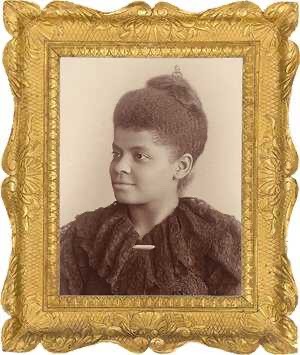
Mary Garrity/National Portrait Gallery, Smithsonian Institution
Journalist and activist Ida B. Wells rose to national attention with her anti-lynching campaign, and spent the rest of her life fighting for the rights of black Americans and women. Wells was born into slavery in Mississippi just a few months before the Emancipation Proclamation. When she was a teenager, both of her parents succumbed to a yellow fever epidemic, leaving Wells in charge of her siblings. She raised them while working as a teacher, eventually moving the family to Memphis, where her aunt lived and the pay was better.
In 1884, Wells was on a train when the conductor demanded she give up her seat in the first-class ladies car and move to the smoking car. When she refused, she was dragged out of the car. Outraged, Wells wrote an article about the incident and successfully sued the Chesapeake & Ohio Railroad Company for violating the 1875 Civil Rights Act. When the railroad company managed to get the verdict reversed, Ida was left disappointed — but determined.
Wells soon began writing articles about race in black newspapers, and bought a share of her own, the Memphis Free Speech, in 1889. When one of her friends as lynched, Wells began an investigation into his killing and others. When she published an editorial on her findings, a mob destroyed the offices of her newspaper and pistol-whipped one of her partners. Wells, who had been traveling at the time, was effectively exiled, and took up residence in Brooklyn and then Chicago. She spent much of her time on the road, traveling throughout the country and in Europe on her anti-lynching campaign. A founding member of the NAACP, she also advocated for suffrage and urban reform.
#Gilded Age | Article#Cori Brosnahan#Ida B. Wells | Brooklyn | New York | United States 🇺🇸#Brooklyn Circle#Maritcha Remond Lyons#Sarah Garnet#Susan Smith McKinney#Victoria Earle Matthews#Ida B. Wells
0 notes
Text
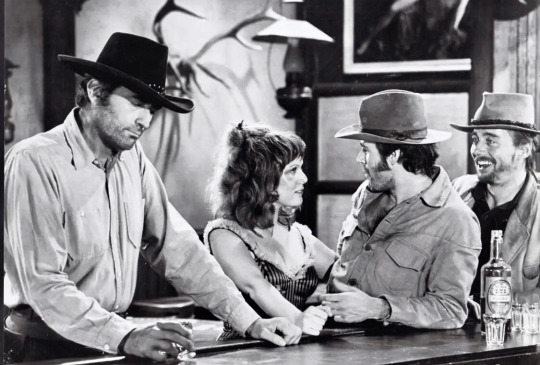
Gregory Peck, Susan Tyrrell, Robert F. Lyons and John Davis Chandler in Shoot Out, 1971.
1 note
·
View note
Text
britcom comedians & panel show personalities who share your sign
AQUARIUS ♒ dara ó briain • frank skinner • glenn moore • guz khan • hugh dennis • lucy porter • maisie adam • mark watson • phil wang • vic reeves
PISCES ♓ aisling bea • alan davies • dave gorman • ed gamble • jenny eclair • katy wix • michael mcintyre • rose matafeo
ARIES ♈ andy parsons • desiree burch • ed byrne • gary delaney • jamali maddix • john kearns • josh widdicombe • josie long • roisin conaty • romesh ranganathan • rory bremner
TAURUS ♉ al murray • alex brooker • catherine tate • greg davies • joe wilkinson • john robins • mae martin • milton jones • morgana robinson • rhys james • rob brydon • sally phillips • sandi toksvig • sean lock • stephen mangan
GEMINI ♊ alan carr • bob mortimer • david baddiel • fern brady • judi love • julian clary • london hughes • mel giedroyc • noel fielding • paul sinha • rich hall • richard ayoade • sara pascoe • sarah millican • shappi khorsandi • sindhu vee • tom allen
CANCER ♋ adam hills • alice levine • david mitchell • katherine ryan • harriet kemsley • ian hislop • jack whitehall • joe lycett • paul merton • peter serafinowicz • phill jupitus • rosie jones
LEO ♌ bridget christie • cariad lloyd • chris ramsey • daisy may cooper • frankie boyle • isy suttie • lee mack • jo brand • nish kumar • victoria coren mitchell
VIRGO ♍ alex horne • dane baptiste • darren harriott • ivo graham • jimmy carr • johnny vegas • lolly adefope • miles jupp • nina conti • stephen fry • sue perkins • tim key
LIBRA ♎ diane morgan • harry hill • jack dee • jon richardson • limmy • nick helm • rhod gilbert • robert webb • tiff stevenson • zoe lyons
SCORPIO ♏ angela barnes • chris addison • elis james • ellie taylor • holly walsh • liza tarbuck • jonathan ross • kerry godliman • kevin bridges • matt forde • mike wozniak • sofie hagen • susan calman
SAGITTARIUS ♐ adam riches • david o'doherty • jessica knappett • larry dean • miranda hart • richard osman • seann walsh • simon amstell • steven k. amos
CAPRICORN ♑ ahir shah • angus deayton • bill bailey • claudia winkleman • james acaster • mark lamarr • paul foot • rob beckett • suzi ruffell
#REPOSTING CUZ I ACCIDENTALLY DELETED IT HAHA#sorry i can't include every person ever but i tried to at least do everyone's faves!#a good day to be a gemini!!!#signs
123 notes
·
View notes
Text

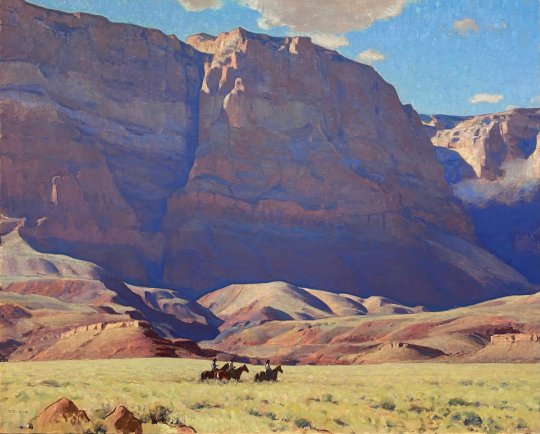

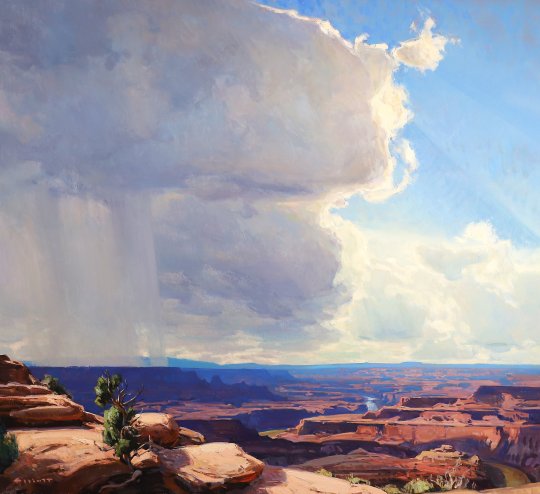

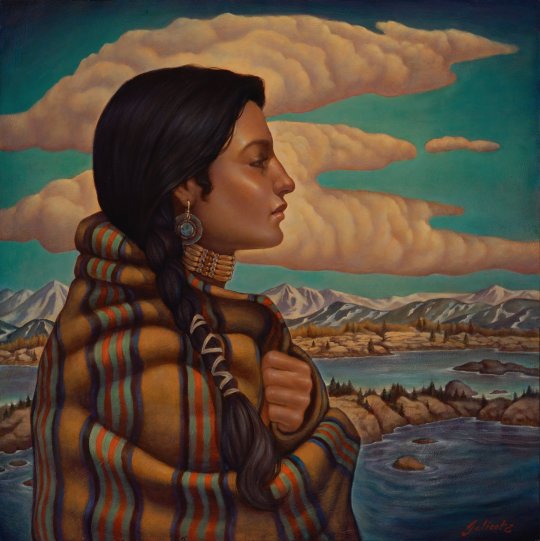
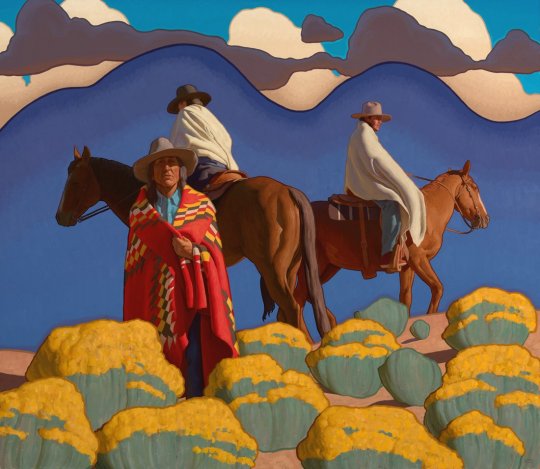


Maxwell Alexander Gallery's 10 Year Anniversary Exhibition.
Opening on Saturday, October 15th, 2022 in Los Angeles, California is Maxwell Alexander Gallery's 10 Year Anniversary Exhibition.
"In the year 2012 we set off on a journey to create a better gallery experience: a gallery focused on artist wellbeing and building museum quality collections for collectors. Our vision was clear from the beginning – to only show quality art, never filler. We always knew we would be a destination, non-reliant on tourist support. However, we never imagined the impact and disruption that we would bring to the American fine art scene in just 10 short years."
Featuring works by artists Thomas Blackshear, Eric Bowman, Scott Burdick, G. Russell Case, Len Chmiel, Kim Cogan, Nicholas Coleman, Glenn Dean, Mick Doellinger, Josh Elliott, Teresa Elliott, Danny Galieote, David Grossmann, Logan Maxwell Hagege, Brett Allen Johnson, David Kassan, Michael Klein, Joshua LaRock, T. Allen Lawson, Susan Lyon, Jeremy Mann, Serge Marshennikov, Ed Mell, Eric Merrell, John Moyers, Terri Kelly Moyers, Howard Post, Grant Redden, Billy Schenck, Matt Smith, Tim Solliday, Joseph Todorovitch, Kim Wiggins, and More.
Artwork is available through a lottery system - To learn more and see more artwork, visit Maxwell Alexander Gallery.

BUY PRINTS | FOLLOW ON INSTAGRAM
238 notes
·
View notes
Photo

Susan Lyon
Curious
Oil on board
284 notes
·
View notes
Note
ok sorry in advance for bothering you, feel free to tell me to get lost, but i was wondering if you, the resident expert, have any monster romance recs that aren’t way too. nsfw i guess? maybe it’s just me but i’m having a hard time finding any. like i’m more interested in the slow burn and the romance but the genre seems to be mainly fast paced erotica and i just can’t get into it
OOh!!! No need to be sorry, I'm always happy to answer stuff like this and talk about (cleaner) monster romances!! I'm honored you'd consider me an expert, though! 🥺💛I feel like I don't actually talk about monster romances all that much!
But I agree that it can be hard to find a monster romance that isn't erotica. Not that erotica isn't good, I just like seeing slow burn romances, too!
I wish I could provide a longer list, but here's what I got so far! (and if anyone finds this and wants to add onto this list, feel free to do so in comments, tags, reblogs, etc)
I will provide links/titles to these stories, say the genre(s), provide a short synopsis in my own words, and then say why I recommend it below the cut!
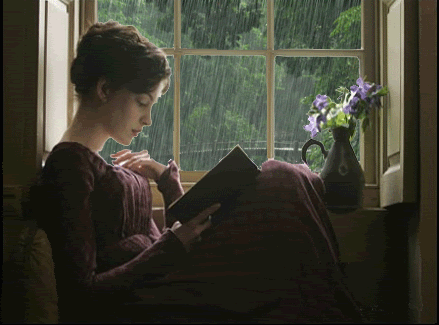
Axiom's End by Lindsay Ellis | sci-fi, alternate history, conspiracy fiction, action/adventure
"An alternate history novel set in 2008 where whistleblower Nils Ortega leaks information to the public that the US government is secretly harboring extraterrestrial refugees. Cora Sabino, Nils' daughter, finds herself developing a connection with one of these aliens after inadvertently becoming the sole communication between humans and aliens."
This series is fucking great!! Admittedly, the monster/alien romance take more of a backseat to the larger plot, and mostly focuses on themes surrounding humanity, human rights, language, trauma, etc. Ellis does such a great job at writing characters that are just so... human, and deep. There is so much complexity and nuance that goes into this series, and just... it's so good! Definitely recommend if you're more into the super slow burns, alien romances, alien action movies like Michael Bay's Transformers series or Independence Day.
"The Courtship of Mr. Lyon" and "The Tiger's Bride" in The Bloody Chamber by Angela Carter | Gothic, feminist fiction, fairytale retelling, horror, anthology
"'The Courtship of Mr. Lyon' follows the romance between Beauty and Beast after Beauty's father takes one of the lion-faced Beast's white roses while taking shelter following a car accident; in 'The Tiger's Bride' a young woman is sent to live with a mysterious masked man after her father gambles her away in a game of cards."
Honestly this book, though a collection of short stories, is one of my all-time favorite books! Carter's writing style is so, so gorgeous and lyrical, and she provides such fantastic, dark, moody, gory, horrific feminist fairytales. Her story "The Bloody Chamber" is also worth checking out! Honestly, this whole book is great!
Beauty: A Retelling of Beauty and the Beast and Rose Daughter by Robin McKinley | Fantasy, romance, fairytale retelling
"Classic Beauty and the Beast retellings."
Despite both being BATB retellings by the same author, both are so, so good in their own ways! While Beauty is way more classic and straightforward in its retelling, the characters are so endearing, the fantasy world is enchanting, and the writing is so *chefs kiss*. Rose Daughter is much the same, only slightly more adult in its tone and writing style - and its ending!
The Shape of Water by Guillermo del Toro and Daniel Kraus | Romance, historical
"A mute janitor working in a high-security government facility falls in love with an amphibious creature."
Yeah, yeah, this is basically the novelized version of the movie lmao. I've not read the whole novel itself, but it's not half-bad!! It's decent enough - though I still feel like the movie to be better. Still worth checking out, I think!
Frankenstein's Monster by Susan Heyboer O'Keefe | Historical
"A sequel, of sorts, to Mary Shelley's classic novel. What becomes of Frankenstein's monster after Frankenstein dies? Where does he go, left to wander the earth?"
Not really a romance, per say, but there are SOME elements of romance! Mostly, this book follows Frankenstein's monster following the OG novel, who he all meets, and it is very much a character study on the monster! It's super fascinating, but its writing style is super similar to Mary Shelley's, so this very much reads like a classic novel. Honestly, I love how O'Keefe was able to mimic Shelley's style so well! But, again, romance is way more lowkey and this is more of a character study than anything else. Definitely reccomend if you loved the OG Shelley novel!
Beauty and the Beast by Megan Kearny | Webcomic, romance, fantasy, fairytale retelling
"A retelling of Beauty and the Beast."
Beautifully illustrated and wonderfully told, this comic is just SO GOOD!! It very much has the same vibes as Robin McKinley's novels, and is steeped in a cozy fantasy atmosphere! The characters are so loveable, the story intriguing, and just AAAUUGGGHHH SO GORGEOUS!!
Netvor: Beauty and the Beast by @rosesnwater | Fantasy, romance, fairytale retelling
"Aceline Capet swears to slay the monster Netvor that lurks in the forest surrounding her village - and ends up becoming entrenched in the world of magic and monsters and Fae."
LEGIT JUST UGH!!!!!!!! THIS NOVEL IS SO FUCKING GOOD!! Legit this is one of my all-time favorite reads from this year! If you love fantasy featuring actual, lore-accurate faeries and super intriguing slow burn romance with endearing characters, please please PLEASE check this out!!!!!!! I SWEAR YOU WONT BE DISSAPOINTED!! Definitely recommend if you love fantasy movies like Legend, Labyrinth, Thumbelina, Howl's Moving Castle, Disney's Beauty and the Beast, etc. or books like Naomi Novik's Uprooted, Shakespeare's A Midsummer Night's Dream, Robin McKinley's work, etc.! It also currently being rewritten as a(n equally beautiful) webcomic that should definitely be checked out as well!
That Which We Call Beast by @raph-fangirl | Historical fiction, romance, fairytale retelling
"A young woman is seeking marriage, and comes into contact with a mysterious bachelor that hides himself from her behind a veil."
Basically if Jane Austen wrote Beauty and the Beast! Definitely a well-written slow burn! It's not completed yet, but with what's available to read it's legit so beautiful!! The prose is so well-crafted, and it legit feels as though I'm reading an Austen novel! Definitely recommend if you love films like the 2005 adaptation of Pride and Prejudice!
Then uhhhh not to toot my own horn but if you wanna read a Victorian Era Gothic romance-horror BATB retelling with a pathetic meow-meow of a monster I offer my story The Monster and the Butterfly- 🤲🥺
These are all the recs I have for now! Again, if there are any you'd like to add, whether they be published, a friend's online work, or your own work!! I hope these are helpful and satisfactory enough for ya!
Again, I love talking about monster romances, thank you so so much for this ask!!!! 🥺💛
#jojo rambles#jojo reads#monster romance#monster lover#monster romance books#monster boyfriend#monster x human#human x monster#book recs#book recommendations#bookblr
134 notes
·
View notes
Photo
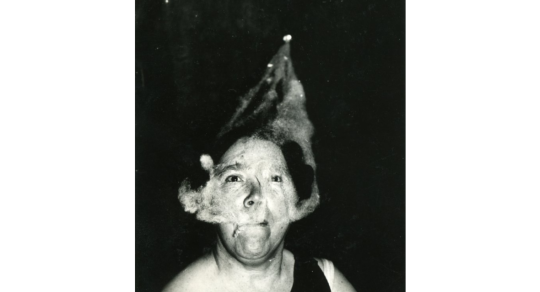

Ectoplasm on the Prairies
In hundreds upon hundreds of photographs, and pages upon pages of notes, a prominent Winnipeg doctor set out to prove he was communicating with the dead. In his grand home on Henderson Highway, T.G. Hamilton built what amounts to a ghost laboratory in the first decades of the last century: a locked room, an open cabinet, more than a dozen state-of-the-art cameras.
Their star-studded guest list included Sherlock Holmes author Sir Arthur Conan Doyle, a Nobel-prize winning scientist and a former prime minister of Canada. Mediums and guests alike were searched before they entered and asked to sign witness statements before they left. His wife, Lillian, wore the key to the room around her neck. The seances started as an anguished mission to talk to their son, Arthur, who died of Spanish flu in 1919 at only three years old.
But as their “home circles” gained international success and fame, the focus of the project shifted, said Serena Keshavjee, a University of Winnipeg art historian who has done extensive work on Hamilton. By the time of his death in 1935, Hamilton and his family were working to prove, scientifically, that ghosts are real and we can talk to them.
By late 1920, T.G. and Lillian had started their own experiments at home, with the help of their children's nanny, Elizabeth Poole, who was a medium. The experiments initially focused on telekinesis — remotely moving objects. A few years later, they expanded to home circles, also called seances, and added two additional mediums: Mary Marshall and her sister-in-law Susan Marshall, also called Dawn and Mercedes.
That’s when, according to Hamilton's reports, they started to see ectoplasm — spooky white masses, alleged to be the physical manifestation of spirits, emerging from orifices on the mediums’ faces and visible only in photographs.
Each seance was diligently photographed by the bank of cameras Hamilton purchased, at great expense, and modified so they could be operated by someone seated at the table. In the interest of scientific rigour, they invited prominent guests, including celebrated Winnipeg doctor Bruce Chown and lawyer Isaac Pitblado.
As Hamilton's fame grew, so did his guest list: former prime minister William Lyon Mackenzie King, Nobel Prize-winning physiologist Charles Richet and Sherlock Holmes creator Sir Arthur Conan Doyle all attended. The mediums weren’t paid for their work, and records indicate T.G. Hamilton himself was earnest in his belief.
62 notes
·
View notes
Text
“Expect nothing and fear nothing, here or anywhere. That’s your first lesson.”
Merriman Lyon, Susan Cooper, "The Dark Is Rising"
0 notes
